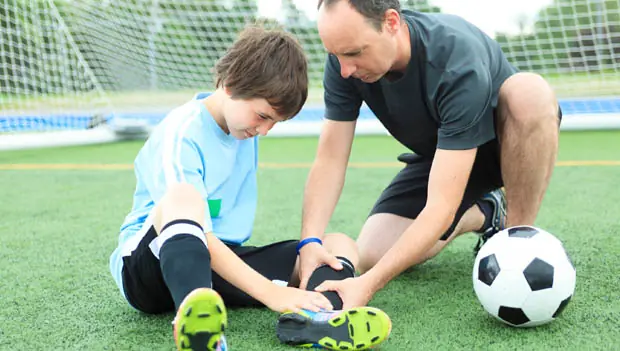
A new school year is upon us. That means it's time for kids to get back to the fields, courts and rinks playing organized sports. But the number of children, ages 6-12 years old, who participated in organized sports has been on the decline the past five years. Why? One reason might be that parents fear the potential of injury to their child.
According to the Centers for Disease Control and Prevention, more than 2.6 million children 0-19 years old are treated in the emergency department each year for sports and recreation-related injuries.
The most common injuries in youth sports are:
- Sprains/strains/bruises
- Growth plate injuries
- Repetitive motion injuries (stress fractures, tendinitis)
- Heat-related illness (dehydration, heat exhaustion, heat stroke)
Injuries can happen to any child who plays sports, but there are some things that can help prevent and treat injuries. Preventing injuries in youth sports needs to be a priority for young athletes, coaches and parents.
More: 7 Yoga Poses for Young Athletes
Tips for Preventing Sports-Related Injuries:
- Enroll your child in organized sports with a group that is properly maintained. Any organized team activity should demonstrate a commitment to injury prevention. Coaches should be trained in first aid and CPR and should have a plan for responding to emergencies.
- Coaches should be well versed in the proper use of equipment and should enforce rules on equipment use.
- Look for organized sports programs that have certified athletic trainers on staff. These individuals are trained to prevent, recognize and provide immediate care for athletic injuries.
- Make sure your child has and uses proper gear for a particular sport every single time.
- Make warm-ups and cool-downs part of your child's routine for sports participation. Warm-up exercises make the body's tissues warmer and more flexible. Cool-down exercises loosen muscles that have tightened during exercise.
- Make sure your child has access to water or a sports drink while playing. Encourage him or her to drink frequently and stay properly hydrated. Remember to include sunscreen and a hat (when possible) to reduce the chance of sunburn.
- Learn and follow safety rules and suggestions for your child's particular sport. In addition, make sure the rules are enforced.
More: Study Shows Female Athletes are More Prone to Overuse Injuries
If an injury does occur, R.I.C.E. is usually the first line of treatment:
Rest: Stop using the injured area for at least 48 hours.
Ice: Put an ice pack on the injured area for 20 minutes at a time, four to eight times per day. Use a cold pack, ice bag or a plastic bag filled with crushed ice that has been wrapped in a towel. Do not put ice directly on the skin.
Compression: Ask your child's doctor about elastics wraps, air casts, special boots or splints that can be used to compress an injured ankle, knee or wrist to reduce swelling.
Elevation: Keep the injured area elevated, above the level of the heart, to help decrease swelling. Use a pillow to help elevate an injured limb.
About the Author


 Find
Find 







Discuss This Article